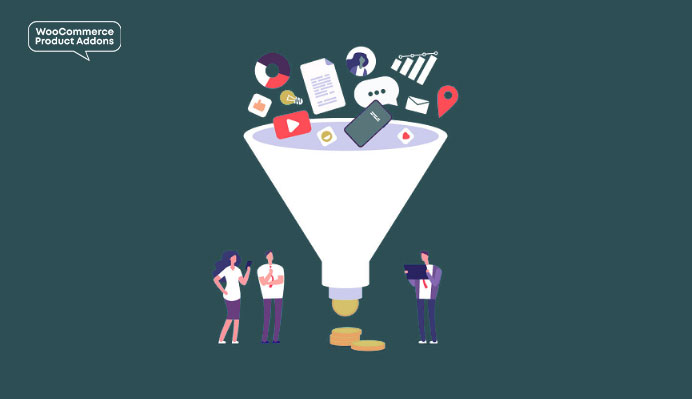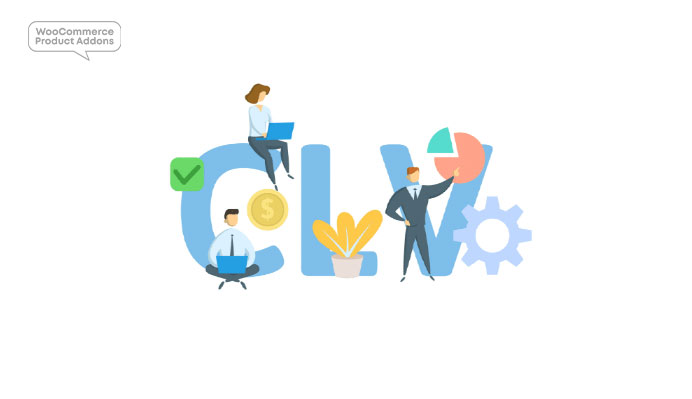What is WooCommerce?
WooCommerce is an e-commerce plugin which provides a number of metrics for websites to analyze the growth and hurdles of a business over time. Woocommerce product addons are one of the major plugins that makes it more significant. Metrics are nothing but a quantifiable measure of any data.
With the wide range of metrics WooCommerce provides, clients can find it difficult to wrap their heads around the choices of metrics to decide on understanding the performance of their businesses. However, there is a sub-category of metrics called the Key Performance Indicator (KPI) as well. Not all metrics are KPIs. Hence, KPIs should be chosen based on business objectives only. In such a scenario, the clients who are new to WooCommerce may require additional inputs in deciding and filtering the metrics that help track their business performance as well as align with their business objectives.
To help resolve such indecisions on choosing metrics, this post will discuss 13 important metrics which will help you better your strategies in improving your WooCommerce business outputs and generate greater profit.
13 Important WooCommerce Metrics to Know
1) Sales
Sales metric helps you understand the number of sales a client has generated from your website. This can track over desired intervals of time say hourly, daily, weekly, yearly basis etc. The interval to be tracked should be best fitted based on the goals and timeline of the client. The woocommerce product addons plugin easily gives us data regarding abandoned carts and return customers.
2) Conversion Rate
Conversion Rate displays the percentage of people who visit a website of your client and become customers after completing a task (say, purchasing a product through a transaction at a payment gateway). On average, the Conversion Rates are 2-3%, it is an important metric which enables your client to improve their marketing and advertising strategy to improve sales and generate profit. Conversion rates can empower with woocommerce custom product addons.

3) Number of Transactions
The number of Transactions is a KPI which helps in understanding and comparing the number of transactions on your client’s website with that of other websites in the same industry. This will enable you to understand if the client’s revenue goals and industry benchmarks are being met.
4) Cost per Acquisition (CPA)
CPA is the total cost incurred for acquiring a customer who completes a certain task (say, checkout at the payment gateway). CPA metric is effective in tracking the usage of a marketing strategy in generating revenue. Keeping CPA values below Average Order Value (AOV) ensures profit. This metric is particularly helpful for pay-per-click campaigns.
5) Cost of Goods Sold (COGS)
COGS is the total direct cost of a product that is being sold to a customer on your client’s platform. Direct cost involves resource cost and labor input for creating that product, whereas indirect costs like advertising and storage rent are excluded while calculating COGS.
COGS can calculate in two steps:
Calculate the following:
Step 1: Beginning Inventory + purchases during the period (P) – Ending Inventory
(Where Beginning Inventory is the merchandise that was left over and not sold out in the previous year and Ending Inventory is the value of products still available for sale)
Step 2: Multiply that number by the total number of products sold (if the number is not readily available, find them from your client).
6) Average Profit Margin
It is the actual amount generated from your client’s business after deducting any expenses such as COGS and other taxes.
Average Profit Margin can calculate using the following formula:
Average Profit Margin = ((Total Revenue – Expenses) / Total Revenue) * 100
This metric can use for understanding the profit of a particular time interval and is also an important KPI for your client.
7) Revenue per Visitor (RPV)
RPV gives a picture of the amount of revenue generated from your client’s website each time there is a visitor to the website. It can calculate using the following formula:
RPV = Total Revenue ÷ Total Site Visitors.
8) Customer Lifetime Value (CLV)
CLV metric helps to analyze the revenue your client can expect from any given customer throughout their business relationship. It is important to maintain long-term customers over multiple new ones. Three things are necessary to calculate CLV. They are:
(i) Understand the section on the client’s website where the transaction is made,
(ii) Track customer history by clubbing transaction history under one roof (say, through creating customer profiles),
(iii) Calculate the revenue made throughout their customer journey
(iv) Add this total revenue for each year they’ve purchased goods from the client’s website, and then multiply this figure by the duration of the period they remained as a customer, and finally subtract any other expenses (say, customer acquisition cost)
In other words, to calculate CLV use the following formula:
CLV = Customer Value * Average Customer Lifespan
A high CLV indicates loyal customers and vice-versa. Low CLV can enable clients to verify customer care, product quality and customer satisfaction.

9) Returning Customer Rate
Returning customer rate metric helps to understand the percentage of customers who have made purchases and returned to the website to make more purchases. With woocommerce product addons, we can determine the return customers of our website. This metric is highly correlated with CLV. The formula for calculating Returning Customer Rate is:
Returning Customer Rate =
(Number of Repeating Customers/ Total Number of Customers) * 100
10) Gross Profit
The growth Profit metric is also a KPI which calculates the total profit made in a given time. This metric can be useful for the growth objective of your client’s website. Gross Profit can calculate using: Gross Profit = Total Sales – COGS
(Note. COGS is explained under point #5).
11) Add to Cart
Add to Cart is the metric which tracks the percentage of customers who add goods to their cart for purchasing from your client’s WooCommerce website. Woocommerce custom product addons are plugins which help to add products and update products easily. This metric is an indicator of your client’s ability to swoon customers into buying products and also about the quality of the user experience interface of your client’s website as well. Low outcomes in this metric can alert the client to improve User Experience and maximize the number of customers adding to the cart and making transactions.
Also Read : Easy Ways to Optimize WooCommerce Product Images
12) Shopping Cart Abandonment Rate
One crucial setback observed in a market website is that adding to a cart does not always turn into making a purchase. Hence, this metric is an indicator of the percentage of shoppers who abandon their carts, without purchasing the products that add to their shopping carts. Barriers to this problem include tedious payment gateway procedures, average loading and checkout time, and bug fixes. That are distracting the customers from a smooth purchase experience. Enabling woocommerce product addons is one of the feasible solutions in abandoning carts. You can calculate the shopping cart abandonment rate (as a percentage) using the following formula:
(i) Total number of completed purchases ÷ Total number of shopping carts created
(i) subtract this amount retrieved in Step (i) from 1
(iii) Multiply by 100
It is important to keep in mind that 70 – 75% is seen as the average industry rate.
13) Net Promoter Score (NPS)
NPS is the metric which enables quantifying customer satisfaction. This can achieve using rating scales and quick surveys which the customer can opt to fill up after completing a transaction from your client’s website. Consistent use of NPS can improve the overall performance of the business by understanding if the customers satisfy with your services, and where and when your client’s business website needs an improvement or revival.
